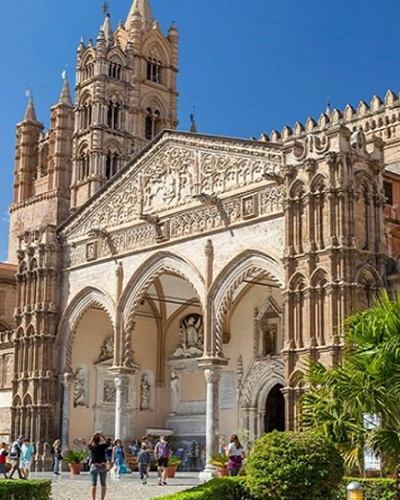It is the fifth Italian municipality by population after Rome, Milan, Naples and Turin and thirty-first at European level; it is also the main urban center of Sicily. The metropolitan area of Palermo, which includes the capital and 26 other municipalities, has a population of 1,041,314 inhabitants. Founded as a port city by the Phoenicians around 734 BC, it has always been a cultural and commercial hub between the West and Asia, therefore a strategic transit point in the center of the Mediterranean.
It has a millenary history that has given it a remarkable artistic and architectural heritage that ranges from the remains of the Punic walls to reach Art Nouveau villas, from Arab-Norman-style residences, to baroque churches and neoclassical theaters.
For cultural, artistic and economic reasons it has been among the major cities of the Mediterranean and today it is among the main tourist destinations of southern Italy and among the major cruise destinations.
It was the capital, from 1160 to 1816, of the Kingdom of Sicily, and second most important city of the Kingdom of the Two Sicilies until 1861.
It is the seat of the Sicilian Regional Assembly, the University of Studies and the main regional archdiocese.



